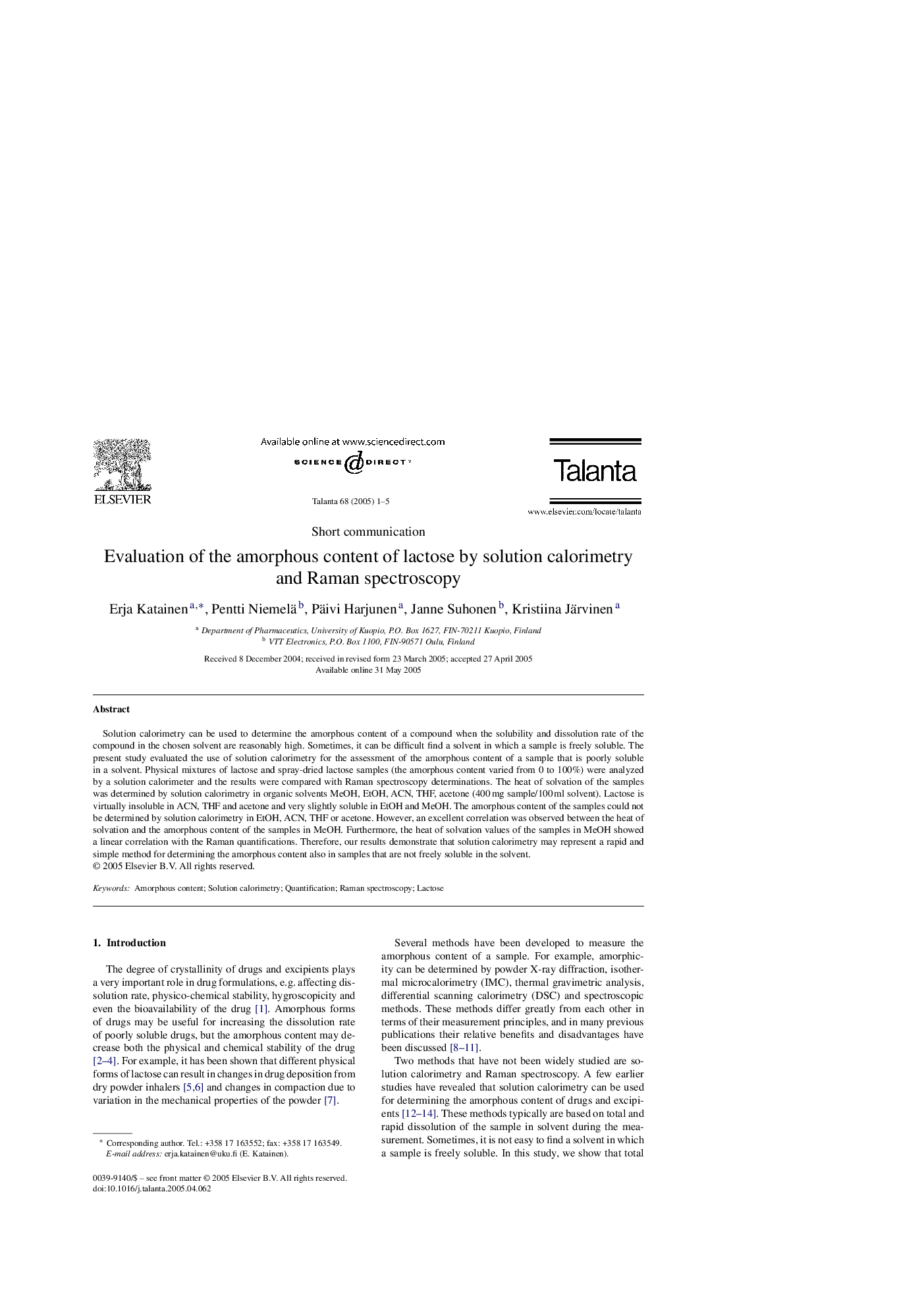| Article ID | Journal | Published Year | Pages | File Type |
|---|---|---|---|---|
| 10559917 | Talanta | 2005 | 5 Pages |
Abstract
Solution calorimetry can be used to determine the amorphous content of a compound when the solubility and dissolution rate of the compound in the chosen solvent are reasonably high. Sometimes, it can be difficult find a solvent in which a sample is freely soluble. The present study evaluated the use of solution calorimetry for the assessment of the amorphous content of a sample that is poorly soluble in a solvent. Physical mixtures of lactose and spray-dried lactose samples (the amorphous content varied from 0 to 100%) were analyzed by a solution calorimeter and the results were compared with Raman spectroscopy determinations. The heat of solvation of the samples was determined by solution calorimetry in organic solvents MeOH, EtOH, ACN, THF, acetone (400Â mg sample/100Â ml solvent). Lactose is virtually insoluble in ACN, THF and acetone and very slightly soluble in EtOH and MeOH. The amorphous content of the samples could not be determined by solution calorimetry in EtOH, ACN, THF or acetone. However, an excellent correlation was observed between the heat of solvation and the amorphous content of the samples in MeOH. Furthermore, the heat of solvation values of the samples in MeOH showed a linear correlation with the Raman quantifications. Therefore, our results demonstrate that solution calorimetry may represent a rapid and simple method for determining the amorphous content also in samples that are not freely soluble in the solvent.
Related Topics
Physical Sciences and Engineering
Chemistry
Analytical Chemistry
Authors
Erja Katainen, Pentti Niemelä, Päivi Harjunen, Janne Suhonen, Kristiina Järvinen,
